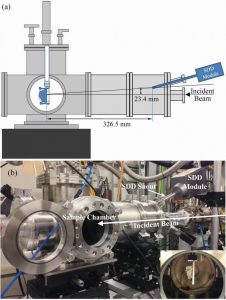A pioneering X-ray technique has been developed by an international team of researchers, allowing to analyse artefacts of any shape or texture in a non-destructive way.

The new technique uses X-ray diffraction (XRD) in order to determine crystallographic phase information in artefacts with very high accuracy and without causing damage to the object being scanned. Researchers can identify pigments in paintings and on painted objects – which could potentially be applied in the future to help to clamp down on counterfeit artwork and artefacts and verify authenticity. The technique is insensitive to the shape of the sample, tolerating even markedly non-planar and textured surfaces, and it is suggested that it can be applied with no preparation of the sample at all and so is completely non-destructive, in contrast to conventional XRD methods.

The efficacy of the XRD technique developed by University of Leicester has recently been proven in a high-resolution configuration at the Diamond Light Source synchrotron. A synchrotron produces highly intense beams of light, primarily X-rays, which can be used to probe matter in a wide variety of ways.

(after University of Leicester, EurekAlert! & PhysOrg)